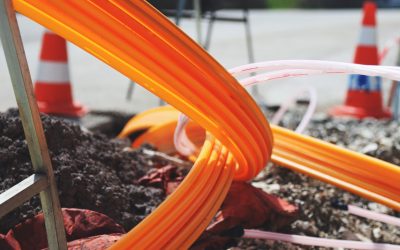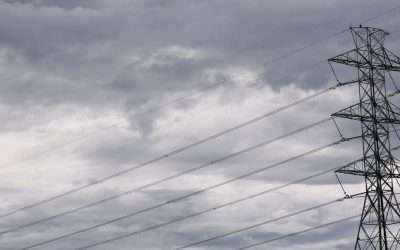Select Tweets From the Roundtable Discussion with Carolien Gehrels

Who will you meet?
Cities are innovating, companies are pivoting, and start-ups are growing. Like you, every urban practitioner has a remarkable story of insight and challenge from the past year.
Meet these peers and discuss the future of cities in the new Meeting of the Minds Executive Cohort Program. Replace boring virtual summits with facilitated, online, small-group discussions where you can make real connections with extraordinary, like-minded people.
A collection of tweets that occurred during the January 21st event at the Dutch Consulate. The hashtag for the event was #urbansolutions.
God created the world, but the dutch made Holland. #urbansolutions
— Hernan Pelassini (@hernanp) January 21, 2013
The challenge for a smart city moving forward is to become a “converged network of networks” – Bas Boorsma #urbansolutions
— Tumml (@Tumml) January 21, 2013
“The next Steve Jobs in the Netherlands is not sitting in a garage, he’s sitting in a smart work center.” @basboursma #urbansolutions
— Dutch Consulate SF (@DutchCGSF) January 21, 2013
In true amsterdam fashion, what was a conference room one minute ago is now an open floor with people mingling #runlikeaship #urbansolutions
— Hernan Pelassini (@hernanp) January 22, 2013
How true! “@dutchcgsf: Amsterdam’s focus on people and their needs led to the development of a city that meets their needs #urbansolutions”
— Jan Wester (@janwester) January 21, 2013
In AMS, Cisco brings networks of innovation together to form a “network of networks.” #urbansolutions
— Dutch Consulate SF (@DutchCGSF) January 21, 2013
#urbansolutions in Amsterdam include focusing on the middle class, young people, investing in culture and much more – Carolien Gehrels
— Dutch Consulate SF (@DutchCGSF) January 21, 2013
“We struggled against water, we struggled against fire, we struggled against diseases, just like SF” – Carolien Gehrels #urbansolutions
— Meeting of the Minds (@MeetoftheMinds) January 21, 2013
Vision for NL: We conquered water to make our land, now we embrace nature to create a future for all. #urbansolutions @meetoftheminds
— Casper Koomen (@casperkoomen) January 22, 2013
“In the 70s I think we [Amsterdam] made big mistakes…We abandoned the middle class from the cities.” – Carolien Gehrels
— Meeting of the Minds (@MeetoftheMinds) January 21, 2013
@meetoftheminds My takeaway from yesterday: urban problems are more a lack of vision than lack of resources/technology. #urbansolutions
— John C. Fox (@djembe) January 22, 2013
Successful urban innovation talk. Bright minds and inspiration. #urbansolutions 4sq.com/VWjG6Z
— Greg Kandankulam (@gregkandankulam) January 22, 2013
Discussion
Leave your comment below, or reply to others.
Please note that this comment section is for thoughtful, on-topic discussions. Admin approval is required for all comments. Your comment may be edited if it contains grammatical errors. Low effort, self-promotional, or impolite comments will be deleted.
Read more from MeetingoftheMinds.org
Spotlighting innovations in urban sustainability and connected technology
Middle-Mile Networks: The Middleman of Internet Connectivity
The development of public, open-access middle mile infrastructure can expand internet networks closer to unserved and underserved communities while offering equal opportunity for ISPs to link cost effectively to last mile infrastructure. This strategy would connect more Americans to high-speed internet while also driving down prices by increasing competition among local ISPs.
In addition to potentially helping narrow the digital divide, middle mile infrastructure would also provide backup options for networks if one connection pathway fails, and it would help support regional economic development by connecting businesses.
Wildfire Risk Reduction: Connecting the Dots
One of the most visceral manifestations of the combined problems of urbanization and climate change are the enormous wildfires that engulf areas of the American West. Fire behavior itself is now changing. Over 120 years of well-intentioned fire suppression have created huge reserves of fuel which, when combined with warmer temperatures and drought-dried landscapes, create unstoppable fires that spread with extreme speed, jump fire-breaks, level entire towns, take lives and destroy hundreds of thousands of acres, even in landscapes that are conditioned to employ fire as part of their reproductive cycle.
ARISE-US recently held a very successful symposium, “Wildfire Risk Reduction – Connecting the Dots” for wildfire stakeholders – insurers, US Forest Service, engineers, fire awareness NGOs and others – to discuss the issues and their possible solutions. This article sets out some of the major points to emerge.
Innovating Our Way Out of Crisis
Whether deep freezes in Texas, wildfires in California, hurricanes along the Gulf Coast, or any other calamity, our innovations today will build the reliable, resilient, equitable, and prosperous grid tomorrow. Innovation, in short, combines the dream of what’s possible with the pragmatism of what’s practical. That’s the big-idea, hard-reality approach that helped transform Texas into the world’s energy powerhouse — from oil and gas to zero-emissions wind, sun, and, soon, geothermal.
It’s time to make the production and consumption of energy faster, smarter, cleaner, more resilient, and more efficient. Business leaders, political leaders, the energy sector, and savvy citizens have the power to put investment and practices in place that support a robust energy innovation ecosystem. So, saddle up.






0 Comments